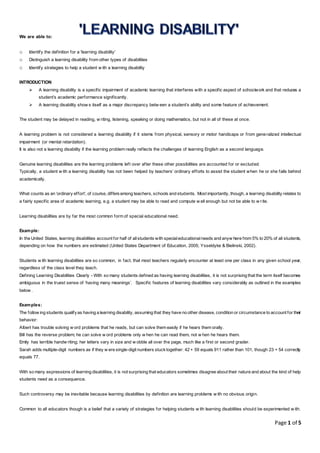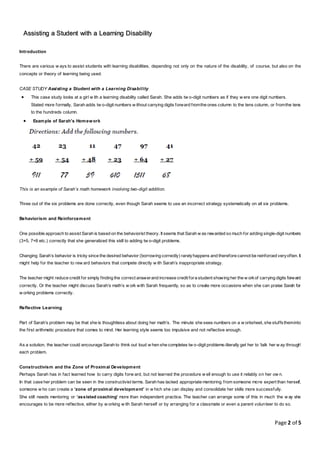The document discusses learning disabilities, defined as specific impairments in academic learning resulting in a significant reduction in performance, and distinguishes them from other disabilities. It emphasizes that a variety of strategies can be used to assist students with learning disabilities and outlines the characteristics and management of Attention Deficit Hyperactivity Disorder (ADHD), noting that medication may help but also presents challenges. Teaching strategies for ADHD include providing clear rules, breaking tasks down, and modeling suitable behavior to create a supportive classroom environment.




